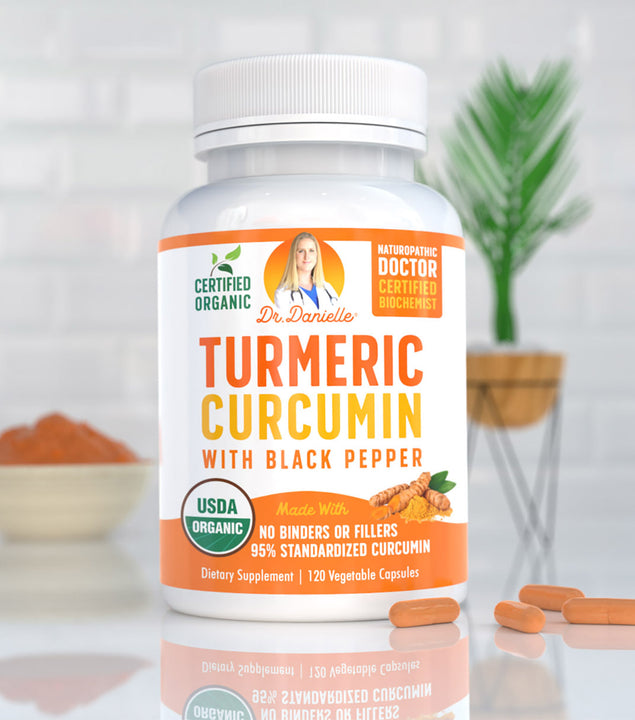Are your joints ache-free? Are you currently able to carry bags of groceries to the car, engage in pleasurable leisure activities (e.g., visiting the museum or playing tennis), and walk for miles without worrying about searing pain? If yes, amazing. But this isn’t the time for you to get complacent yet. Your joints may not continue to be on their best behavior as you age. Instead, given the sobering statistic that over a third of people over 65 have osteoarthritis (“wear and tear” arthritis”), the likelihood of your joints getting inflamed, degrading, and causing you white-hot agony is, unfortunately, high (1).
Still, “high chances” isn’t the same as “a sure thing”. There are still proactive steps you could take now to increase the odds of your joints working for years to come—continue reading to discover what they are.
#1: Maintain a healthy weight
What’s your BMI (Body Mass Index)? Note: BMI = (weight in pounds * 703) / (height in inches²) (2). If your BMI exceeds 25.0, you may wish to consider losing weight. As it turns out, every extra pound you carry translates to a three- to five-time increase in stress to your knees (3). After tracking more than 1,600 individuals with healthy knees for ten years, researchers in this study found that those who were overweight or obese were two to three times more likely to be diagnosed with osteoarthritis of the knee than those who were normal weight (4).
Embarking on a weight loss journey can be an incredibly daunting prospect: how much should you lose, and where do you start? Remember how every additional pound you carry increases the stress across your knee joint three to five times? Well, the opposite holds. More specifically, this study highlighted a 1:4 ratio of body weight loss to a decrease of the load on the knee joint (5). In other words: losing just one pound of body weight will result in a four-pound reduction in the mechanical load exerted on your knee joints! If you weigh 250 pounds, even a very moderate weight loss of 10 to 12 pounds could help significantly lower your risk for osteoarthritis (6, 7).
Here are two tips you may find helpful when kickstarting your weight loss journey:
- Build your diet around minimally processed, nutrient-dense foods (i.e., “whole foods”): Eating more of these low-calorie-density foods could help you achieve and maintain the energy deficit necessary for weight loss (8, 9, 10).
- Increase your physical activity levels: Beyond increasing your daily calorie expenditure, research also shows that regular exercise could help boost cartilage strength and quality (11). Note that “exercise” doesn’t necessarily have to mean intense, hardcore activities like HIIT sessions, either. Studies suggest that even walking would do your joints a world of good. Take this 2022 study, for instance (12). After four years, researchers found that 37% of the study participants who did not walk for exercise developed new, frequent knee pain, compared with 26% who did walk.
#2: Eat an anti-inflammatory diet
A growing body of evidence suggests that chronic, low-grade inflammation may be to blame for joint degeneration and, thus, contribute to the development of osteoarthritis (13, 14, 15, 16). What does this mean for you? To preserve the health of your joints well into your golden years, strive to keep your inflammation levels low. And one of the best ways you could do that is through an anti-inflammatory diet, like the Mediterranean and DASH diets (17, 18, 19).
That said, if you’re uncomfortable with the idea of sticking to set, clear-cut dietary “rules”, you could work on adding more antioxidant-rich foods to your plate. Examples include oily fish (e.g., tuna and salmon), fruits (e.g., blueberries and strawberries), vegetables (e.g., kale and spinach), beans, nuts, seeds, and olive oil (20). Those who struggle to get enough anti-inflammatory foods due to time or financial constraints or are interested in enhancing their joint-health-boosting efforts could also consider supplementing with the following potent antioxidants: alpha-lipoic acid, Indian frankincense extract, and curcumin.
#3: Avoid drinking sodas
After spending a long, hard day at work, nothing beats the feeling of sinking into your couch, digging into your just-bought-from-across-the-street takeaway dinner, and cracking a cold can of refreshing, fizzy soda. Here’s a piece of well-intentioned advice. You might want to give the last bit a miss (i.e., the soda) occasionally—your joints will thank you for it.
While the specific mechanisms are still unclear, researchers have found a link between soda consumption and osteo- and rheumatoid arthritis progression. Take, for instance, these research findings presented at the 2012 American College of Rheumatology Annual Meeting (21). After controlling for BMI and other factors that may contribute to knee osteoarthritis, researchers found that men who consumed more soft drinks per week had worse knee OA progression.
A 2014 observational study published in The American Journal of Clinical Nutrition paints a similar picture for women (22). After following nearly 190,000 women for two decades, it concluded that women who drank more than one sugar-sweetened soda a day were 63% more likely to develop rheumatoid arthritis than those who drank less than one soda a month. Again, this was after accounting for other factors such as weight, age, smoking, and alcohol use.
Here are two tips that could help you wean off the nightly bubbly, joint-hurting indulgence:
- Find a replacement: If ice-cold water doesn’t do the trick for you, try spicing things up by adding cut fruit or cucumber to add some flavor. You could also consider (low-fat or fat-free) milk (or milk alternative) and 100% fruit and vegetable juice.
- Cut back gradually: You don’t have to go cold turkey. Instead, slowly cut back your intake of soda. Go from drinking it daily to three times a week, then once a week. It’ll be more sustainable. Also, note that you don’t have to aim for elimination. Moderation is good enough in most cases.
#4: Change the way you use your phone
Most of us spend an inordinate amount of time on our phones these days. We spend chunks of our time texting, checking emails, scrolling through social media, etc. This hurts our joints. But wait … how? Isn't using your phone one of the least joint-taxing activities you could do? Yes, it is, but only for joints like your hips and knees. Just think about the posture you adopt when using your phone (are you reading this article on the phone right now?) Do you hunch over?
Compared with holding your head upright, this common "text neck" position increases the force on your neck muscles and cervical spine—made up of joints—by a factor of four or five (23). All that “tippity-tappity” action you do all day long on the phone could also cause strain to your fingers, potentially accelerating joint degeneration (24). Of course, while steering clear of your phone is an obvious way to protect your joints, it lacks practicality. What's more realistic and immediately achievable is if you were to be mindful of your posture while using your phone. Beyond that, you could also use the voice-to-text tool or get yourself a phone stand to take the strain of constantly holding a phone off your fingers and thumbs.
#5: Consider joint supplements
Dozens of joint supplements claim to support your joints' health. So how would you ever know which ones truly work? Answer: by looking out for the following science-backed active ingredients:
- Glucosamine sulfate: In two separate studies, researchers studied the protective effects of glucosamine supplementation on knee joint health in 19 to 22-year-old soccer players and cyclists (25, 26). After three years, they found a slower rate of degradation of type II collagen—the foundation of joint cartilage—in the groups that took a high dose of glucosamine than the low-dose and placebo groups.
- Methylsulfonylmethane (MSM): Owing to its ability to counter inflammation (which, as mentioned earlier, contributes to cartilage breakdown), MSM supplementation could help prevent age-related joint degeneration (27).
- Chondroitin sulfate: Supplementing with chondroitin sulfate benefits your joints like glucosamine—it ramps up your body's cartilage repair. According to this 2018 study, chondroitin supplementation was more effective than a placebo in alleviating joint pain and improving joint function (28).
- Hyaluronic acid: A key component of synovial fluid, a thick liquid found between articulating cartilage, responsible for cushioning and lubricating the bones as they move (29, 30). Unfortunately, with age, the quality of your hyaluronic acid in the synovial fluid decreases, which often results in inflammation, pain, and swelling (31). So, following that line of reasoning, supplementing with hyaluronic acid could support the health of your joints—and research wholeheartedly agrees (32).
Osteoarthritis doesn’t have to be in your future. Act now.
Your joints are precious assets. Hopefully, this article has given you the information you need to provide them with the best possible care over your lifetime. Even if you already suffer from joint pain, these tips can be beneficial. Remember: it's always better to be proactive than reactive.
And for those still searching for a high-quality joint supplement containing all the active ingredients mentioned above, your search ends with Dr. Danielle’s Joint Assist. Every capsule boasts a potent mix of cartilage-bulking glucosamine sulfate and chondroitin, moisture-boosting hyaluronic acid, and inflammation-busting antioxidants MSM and Indian frankincense extract (and more). Psst: we can hear your joints sighing in relief even from here—don’t let them down!








